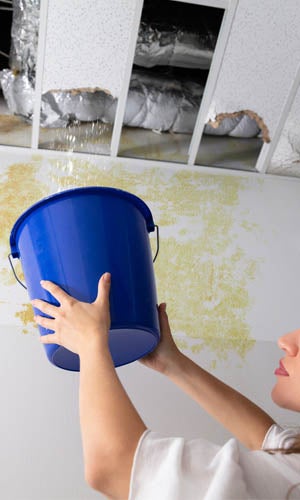6 Ways to Locate Surprise Water Leaks in Your Home
6 Ways to Locate Surprise Water Leaks in Your Home
Blog Article
What're your beliefs on Detecting hidden plumbing leaks?

Early detection of leaking water lines can minimize a prospective calamity. Aside from conserving you cash, it will certainly lessen the stress and also aggravation. The moment you locate a leakage, calling your plumber for repair work is the very best remedy. However, some small water leaks may not be visible. If you can not discover it with your naked eyes, below are some hacks that assist.
1. Take A Look At the Water Meter
Every residence has a water meter. Inspecting it is a guaranteed manner in which aids you find leaks. For starters, switch off all the water resources. Guarantee nobody will purge, utilize the faucet, shower, run the washing device or dishwasher. From there, go to the meter and watch if it will change. Given that nobody is using it, there must be no motions. That indicates a fast-moving leak if it moves. Also, if you identify no changes, wait a hr or 2 and also check back once again. This means you might have a sluggish leak that might also be below ground.
2. Examine Water Usage
If you find sudden adjustments, regardless of your usage being the very same, it implies that you have leaks in your plumbing system. An unexpected spike in your costs suggests a fast-moving leakage.
Meanwhile, a stable boost monthly, despite having the very same habits, shows you have a sluggish leakage that's likewise slowly rising. Call a plumber to thoroughly inspect your residential property, particularly if you really feel a warm location on your flooring with piping underneath.
3. Do a Food Coloring Test
When it comes to water intake, 30% comes from bathrooms. If the shade somehow infiltrates your bowl throughout that time without flushing, there's a leakage between the container as well as dish.
4. Asses Outside Lines
Do not forget to inspect your outside water lines too. Should water leak out of the link, you have a loose rubber gasket. One small leakage can waste heaps of water and also increase your water bill.
5. Evaluate and Analyze the Situation
Homeowners need to make it a habit to examine under the sink counters as well as even inside cabinets for any bad odor or mold growth. These two warnings show a leak so punctual attention is needed. Doing routine inspections, even bi-annually, can save you from a significant trouble.
Examine for discolorations as well as deteriorating as most appliances as well as pipes have a life expectations. If you suspect leaking water lines in your plumbing system, don't wait for it to escalate.
Early detection of leaking water lines can alleviate a prospective catastrophe. Some tiny water leakages may not be noticeable. Checking it is a surefire means that assists you uncover leakages. One tiny leak can throw away heaps of water and increase your water expense.
If you believe leaking water lines in your plumbing system, do not wait for it to intensify.
WARNING SIGNS OF WATER LEAKAGE BEHIND THE WALL
PERSISTENT MUSTY ODORS
As water slowly drips from a leaky pipe inside the wall, flooring and sheetrock stay damp and develop an odor similar to wet cardboard. It generates a musty smell that can help you find hidden leaks.
MOLD IN UNUSUAL AREAS
Mold usually grows in wet areas like kitchens, baths and laundry rooms. If you spot the stuff on walls or baseboards in other rooms of the house, it’s a good indicator of undetected water leaks.
STAINS THAT GROW
When mold thrives around a leaky pipe, it sometimes takes hold on the inside surface of the affected wall. A growing stain on otherwise clean sheetrock is often your sign of a hidden plumbing problem.
PEELING OR BUBBLING WALLPAPER / PAINT
This clue is easy to miss in rooms that don’t get much use. When you see wallpaper separating along seams or paint bubbling or flaking off the wall, blame sheetrock that stays wet because of an undetected leak.
BUCKLED CEILINGS AND STAINED FLOORS
If ceilings or floors in bathrooms, kitchens or laundry areas develop structural problems, don’t rule out constant damp inside the walls. Wet sheetrock can affect adjacent framing, flooring and ceilings.
https://www.servicemasterbyzaba.com/blog/how-to-detect-water-leakage-in-walls/

We hope you enjoyed reading our topic on Leaking water lines. Thanks so much for taking the time to read our blog post. Feel free to take the time to promote this blog posting if you liked it. Thanks for your time. Don't forget to check up our website back soon.
Report this page